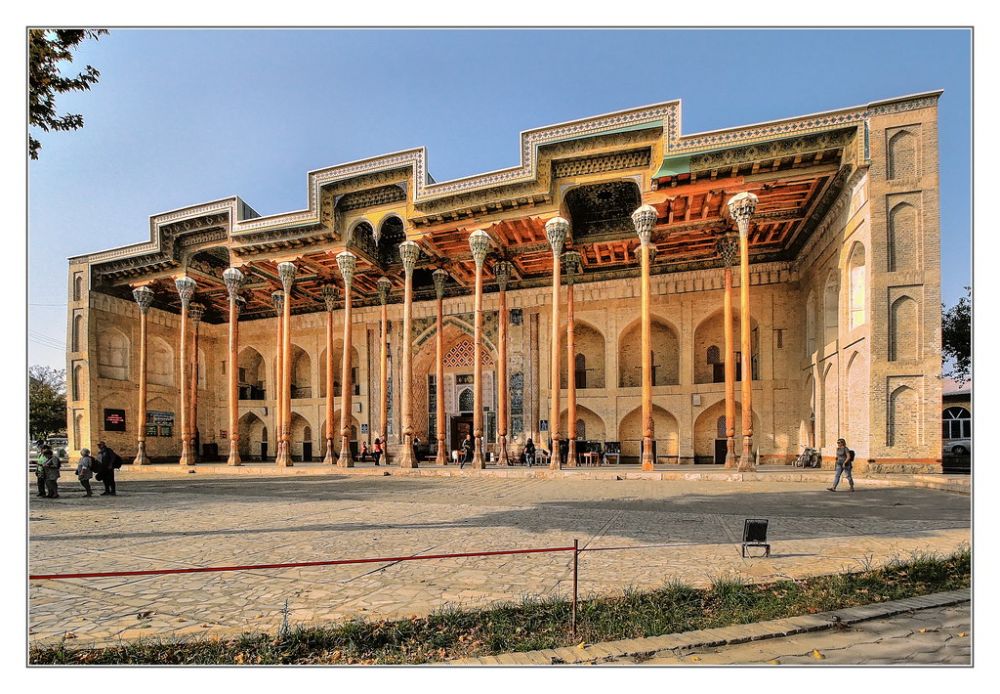

Welcome to a journey through the exquisite architecture and rich history of the Bolo Haouz Mosque, a cherished historical site in the ancient city of Bukhara, Uzbekistan. Witnessing the cultural interplay of different eras, this mosque has become a vibrant testament to the Islamic architecture and heritage within the region.
Constructed in 1712 under the reign of Emir Shah Murad, the Bolo Haouz Mosque served as a place of worship for the Emir and his entourage. Its foundation points to the impressive architectural development in Bukhara during the Emirate period. The mosque's unique structure and ornamental design portray a blend of Persian and Central Asian artistic influences which have been pivotal in shaping the mosque’s grandiose stature.
One of the key features of the mosque is its stunning iwan (entrance hall), supported by twenty wooden columns carved with intricate designs and capped with elegant stalactite decorations, known as muqarnas. These elements, along with the beautifully decorated ceiling and the facade adorned with colorful tiles, make the mosque an unforgettable example of classic Islamic architecture.
The rise of tourism in Bukhara can be traced back to the late 20th century when Uzbekistan began opening up to the international community following its independence from the Soviet Union in 1991. The Bolo Haouz Mosque, along with the historical center of Bukhara, gained popularity among visitors who sought to uncover the mysteries of the Silk Road and its cultural treasures.
As part of the Historic Centre of Bukhara, the Bolo Haouz Mosque was recognized as a UNESCO World Heritage Site in 1993, which significantly raised its profile among global tourists. Efforts were made to preserve and restore the mosque, ensuring its grandeur stood the test of time.
In recent years, with the trend in experiential and cultural tourism, visitors to Bukhara prioritize authentic experiences that offer a deep understanding of local traditions and history. The mosque's serene atmosphere and architectural beauty continue to draw in those seeking spiritual reflection and cultural enrichment.
Today, the Bolo Haouz Mosque functions as both a museum and an active place of worship, accommodating the spiritual needs of the local population while allowing tourists to observe and participate in cultural practices. Guided tours often recount its storied past and highlight its architectural significance.
The mosque's proximity to other notable historical landmarks, such as the Ark of Bukhara and the Poi Kalon architectural complex, makes it a convenient site for tourists to include in their cultural itinerary.
Looking ahead, the tourism industry in Bukhara, with the Bolo Haouz Mosque as one of its gems, aims to create sustainable tourism practices that protect the region's rich cultural heritage. The inclusion of digital tools, virtual reality experiences, and interactive exhibits are steps toward embracing modern trends while offering enriched experiences to tech-savvy travelers.
For those seeking to immerse themselves in the wonder of Central Asian history and culture, the Bolo Haouz Mosque remains an essential stop on their journey through the storied landscape of Uzbekistan.